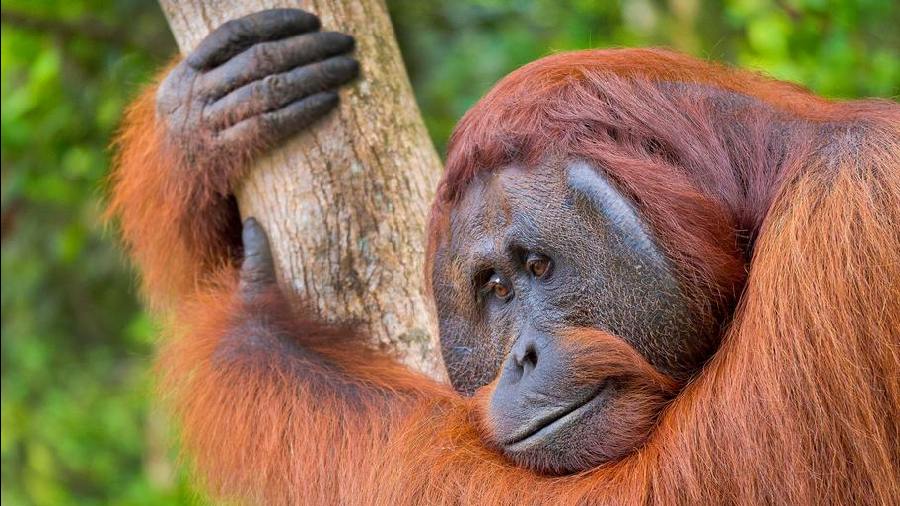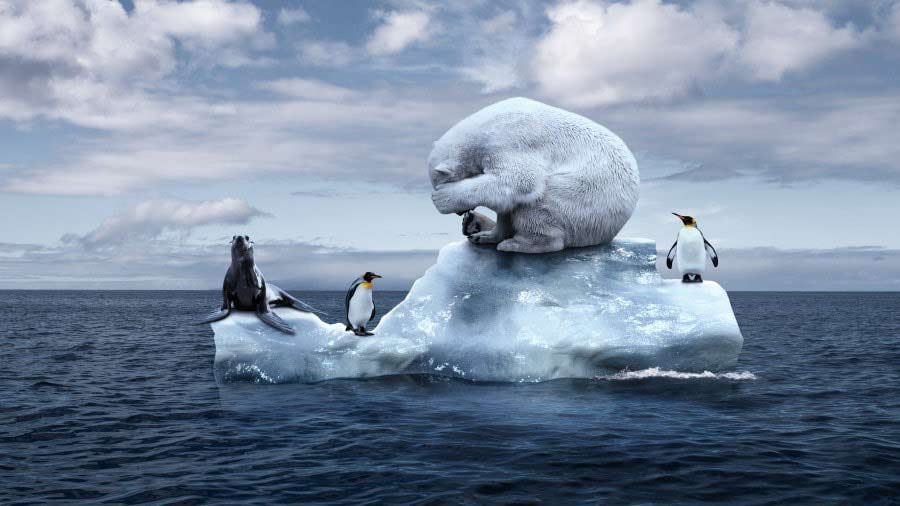The natural ecosystems that sustain our planet and its species are fast declining.
Currently, less than 17% of land and 8% of oceans globally are protected areas where biodiversity is theoretically safe from threats like deforestation, exploitation or pollution.
But even though they are protected, these areas still aren't safeguarded from other hazards sparked by climate change, such as drought, floods and wildfires.
Human-induced biodiversity loss is driving the world's sixth mass extinction whereby three-quarters of animal and plant species could disappear in just a few centuries. This loss also worsens climate change by denuding the planet of carbon stores provided by trees and other vegetation.
This month's UN biodiversity conference in Montreal, Canada, aims to arrest ecosystem decline by protecting 30% of both global land and sea by 2030 (dubbed "30 by 30").
The goal, if agreed, will be part of a new global biodiversity framework, the first to be negotiated since 2010.
The 15th Convention of Parties (COP15), which upholds the 1992 Convention on Biological Diversity (CBD) ratified by 195 UN members and the European Union, seeks to maintain biodiversity through the sustainable use of nature resources.
"Biodiversity is the foundation of life," said Elizabeth Maruma Mrema, a Tanzanian lawyer and executive secretary of the United Nations Convention on Biological Diversity based in Montreal.
"We depend on biodiversity for the food we eat, the water we drink, the sequestration of carbon, the medicines we take, the air we breathe," she told DW.
Tackling drivers of biodiversity loss
There is a lot of pressure for this critical COP to establish realistic and achievable goals.
The 2010 conference in Nagoya, Japan, set 20 biodiversity targets such as halving natural habitat loss by 2020. None were met, according to a 2020 CBD report.
"We basically failed to achieve any of the targets and things obviously have got a lot worse since," said Dave Hole, a climate change and biodiversity scientist at US-based Conservation International. "The next 10 years are incredibly important," he added, noting that insect numbers, which are vital to ecosystems as pollinators, are in steep decline. Some 40% of the world's insect species could become extinct over the next few decades, a 2019 study found.
The Montreal biodiversity summit will create a roadmap for nature recovery by 2030, not only through protection but by targeting 22 drivers of biodiversity loss, including overexploitation of natural resources, pollution, invasive alien species and climate change.
Biodiversity is also vital to the world economy. With 50% of global Gross Domestic Product dependent on nature, according to Mrema, biodiversity protection will not also nurture life on earth but will provide near 400 million extra jobs globally by 2030.
Mrema believes that the world is "ready to take those needed actions to reverse and halt the loss of biodiversity," but increasing protection won't be an easy task.
Roadblocks to nature protection
An area of forest equivalent to the size of Portugal is cut down every year — taking valuable biodiversity with it. Though half of this area is replanted, that doesn't restore ancient ecosystems and the species that once thrived there.
The efforts at COP15 to greatly increase the amount of protected biodiverse area will need to accommodate a number of competing interests. Will Indigenous people, for example, be forced off traditional lands where they live and work?
Mrema says the 30 by 30 goal is likely to be ratified. But, she added, there needs to be agreement on safeguarding Indigenous land rights, culture and traditional knowledge as it is those communities who are the custodians of biodiversity.
Finance is set to be another major sticking point. Some estimates say the current gap necessary to finance biodiversity protection could be as much as $824 billion (€780 billion) per year by 2030.
Like the deal for climate loss and damages compensation brokered last month at the COP27 climate conference, developing nations including Gabon, Cuba and Argentina, have called for rich countries to provide $700 billion a year by 2030 for biodiversity.
But developed nations have been reluctant to create a funding mechanism for nature protection.
"We don’t want a paper agreement without anything behind it," said South Africa Environment Minister Barbara Creecy of the need to make up the funding gap. "We want a special biodiversity and conservation fund to support the goals."
A draft text of the biodiversity agreement includes the aim to reform around $500 billion annually in funding that harms nature, such as subsidies for fossil fuels among other things. This will replace the failed 2010 commitment to "eliminate, phase out or reform incentives, including subsidies, that are harmful to biodiversity," the draft text says.
Biodiversity and climate action interdependent
Using fossil fuels for energy is not only one of the main drivers of climate change, it also produces air and water pollution that damages the natural world. This illustrates the key link between biodiversity and climate agendas.
Experts say that any 30 by 30 target will be threatened by the onset of global warming and extreme weather impacts. "We can't find solutions for one in isolation from the other," said Elizabeth Maruma Mrema.
According to released last week, to avoid catastrophic climate change, the global land sector – including agriculture, forestry and natural land protection and restoration — must reach net zero emissions by 2030.
Protecting biodiversity would therefore serve to help transform the land sector from a greenhouse gas emitter (currently 12 gigatons annually) to a carbon sink by 2050, according to the report by Conservation International.
But such natural climate solutions will demand a much better understanding of biodiversity decline.
"The climate crisis has been studied in far greater depth scientifically than the crisis of biodiversity loss.," said Jörg Rocholl, president of the ESMT international business school in Berlin, who is calling for a price on biodiversity loss like that placed on CO2 in the EU Emissions Trading System.












